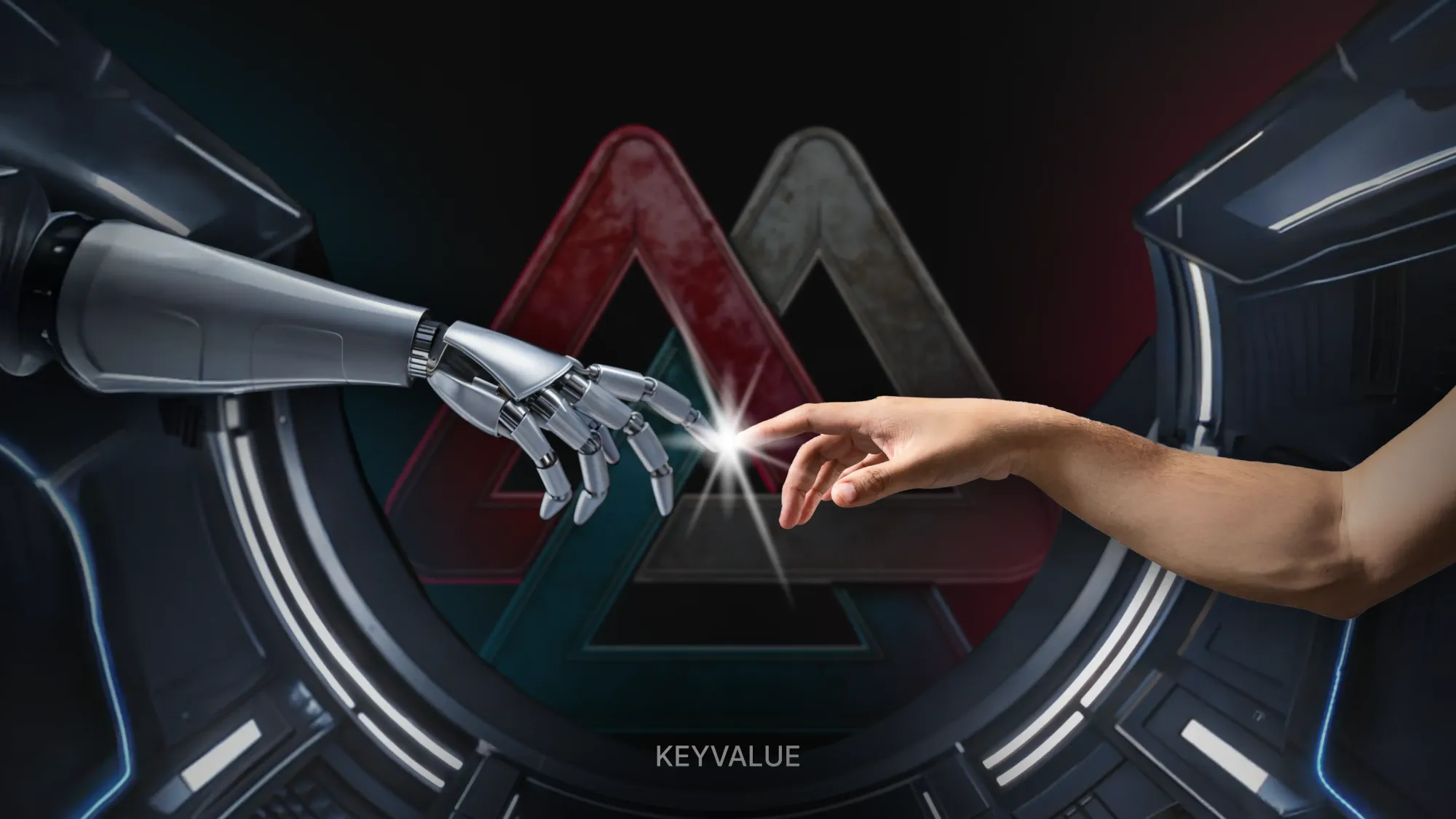
Highlights
- AI tools for developer productivity are transforming how product development happens, turning weeks of work into days without compromising quality.
- A real example: a feature that typically takes 35 days to build was completed in just 10 using AI tools like Cursor, Claude 3.5 Sonnet, and v0.
- While AI boosts speed and efficiency, developers must stay cautious of its limits, context constraints, overconfidence, and shallow understanding.
- AI in software development isn’t about replacing engineers but empowering them to build faster, think smarter, and evolve with intelligent tools.
I used to break into a cold sweat whenever I needed to write a complex regex pattern. You know the type - parsing messy log files, validating bizarre email formats, or extracting data from inconsistent text. I'd spend hours searching Stack Overflow, testing on regex101, and still end up with a pattern that worked more by luck than logic. Meanwhile, that one developer in every team could whip up perfect regex patterns like they were writing their name. Yeah, I envied them. Hard.
That was a year ago.
Today? I speak my regex needs to AI, in plain English, and boom - I get working patterns 90% of the time. The other 10%? A quick tweak, and we're done. No more regex anxiety. No more imposter syndrome. Just solutions.
But this isn't just about regex. This transformation represents something far more profound about where software product development is headed. We've evolved from an era where knowledge was locked in dusty programming books, to the internet age where answers were O(n) Stack Overflow searches away, to today's AI age, the future of software product development, where solutions are just O(1) away - ask and you shall receive.
Boosting developer productivity with AI: Proof in numbers
Two weeks ago, we were in a war room, tensions running high. Our startup's next funding round hinged on one crucial feature: “Estimates.” On paper, it was "just" a replication of our existing Jobs and Invoices functionality. But the original feature? That beast took 50 days to build. Even with our battle-tested patterns in place, the new feature would take 33-35 days, minimum.
We didn't have 35 days.
With a ramped-down team of just three developers - one backend, one frontend, and one mobile - even a 30-day timeline felt like a distant dream. Our tech head flew down personally, staying with the engineers to ensure everything stayed on track. The mission was clear: ship this feature, maintain quality, and no cutting corners. The future of the company was on the line.
What followed was an intense hunt for the perfect AI tools for developers. We experimented with everything—from ChatGPT and GitHub Copilot to Bolt, Replit, and Cursor, testing various models and platforms in search of the optimal development suite. After extensive testing (I'll spare you the comparison matrix here), we found our trinity: Cursor + Claude 3.5 Sonnet + v0.
What happened next still feels unreal. Ten days. That's all it took. Ten. Days!
Let that sink in: what should have taken 35 days, we shipped in 10. A staggering ~70% efficiency boost with a third of the team size. The secret? We knew the stack, understood the business context, and most importantly, knew how to leverage AI tools for developer productivity. This wasn't just a productivity improvement — it was a testament to what's possible in software product development.
AI in software development: What actually works (and what doesn’t)
After our 10-day development sprint, we've gathered some hard-earned insights about AI-powered product development. Let's cut through the hype and get real about what works and what doesn't.
The planning phase
We began by collaborating with Claude on the broader architecture:
- PRD analysis and feature breakdown
- System design and database schema discussions
- API endpoint planning and task structuring
This upfront investment in planning helped us catch potential issues early on and align our technical approach with business requirements.
Setting up the foundation
Cursor, an AI-augmented IDE built on VS Code, became our primary environment — one of the most effective developer productivity tools we’ve ever used. Here's how we optimized it for maximum efficiency.
- Complete codebase indexing for contextual awareness
- Setup cursor rules from the cursor directory specific to tech-stack
- Indexed relevant API documentation (Stripe, Sunbite, etc.)
- Disabled web search to force local context usage and resources
Relied heavily on Cursor features like a composer for boilerplate generation, auto-completion for faster coding, and a chat feature for AI assistance. The results were remarkable:
- CRUD operations: 70-80% faster
- Boilerplate and API integrations: 80% speed boost
- Instant generation of API documentation and tests
When conversations with AI went off track, starting fresh was faster than course correction. This "fail fast, restart fast" approach saved hours of frustrating back-and-forth.
Our velocity was unprecedented – the only slowdown came during code reviews, where we maintained our quality standards through dev review, peer review, and QA testing.
The reality check: Understanding limitations of AI coding assistants
Even the best AI for code generation have boundaries:
Limited context window
Claude 3.5 Sonnet which we used has a context window of 200k tokens (≈20k lines). We had large datasets that needed to be parsed, searched, or converted into data types and large context windows posed challenges:
- Slower inference and Increased processing time
- Higher probability of inconsistencies
- Diminishing returns on output quality
- If the dataset is too long, we can’t add that to the context window.
The "Yes Man" syndrome
Remember that new junior dev who nodded along to everything in meetings, then went off and built something completely different? AI tools can be worse: They'll confidently use deprecated libraries, pull in packages that don't exist, ignore previously set guidelines, and take your words as gospel without questioning assumptions. So you need to be extra cautious in prompting and should be specific with your requirements.
The speed trap
This is a dangerous one. When you're coding with AI, everything feels fast. Tab-tab-tab, and your feature's done. But this incredible speed comes with hidden costs:
- Surface-level thinking replaces deep understanding
- You skip over edge cases you'd normally catch
- The mental model of your code becomes shallow
- Bugs become more subtle and harder to anticipate
Remember when you used to think through each line of code you wrote? That mental process wasn't just about writing code – it was about building a complete understanding of your system. The speed can be intoxicating, but slow down enough to let your experience and intuition catch up.
Are AI tools for developer productivity really worth it? The final verdict
Think of the AI in software development as that new team member who joined your project: incredibly fast and knowledgeable, but with distinct quirks. They won't question your requirements, forget everything between conversations, and confidently make mistakes. This raises an interesting question:
Are AI tools for developer productivity worth it ?
AI isn't a mind reader (yet), but it's the world's most knowledgeable pair programmer—if you know how to speak its language. When people complain about AI "hallucinating," they're missing the point. These tools have digested every public codebase and programming discussion in existence. If you're not getting what you need, you're probably not asking correctly.
These AI-powered development tools are transformatively powerful, but they demand respect and understanding. They require us to evolve as developers—to think differently and communicate precisely. The future isn't about AI replacing developers—it's about developers who can harness AI responsibly and effectively. The tools are here. All you have to do is evolve with them.
At KeyValue, we’re not just adapting to the AI era; we’re helping define it. As an AI-first product development company, we build scalable, intelligent systems that empower startups, scale-ups, and enterprises to redefine the future.
FAQs
- Is AI reliable for coding?
AI is reliable for speeding up coding tasks like boilerplate generation, debugging, and documentation. Tools like Cursor, GitHub Copilot, and Claude 3.5 Sonnet work best with clear prompts and structured codebases. Still, AI can make mistakes or use outdated libraries; so it’s best seen as a skilled assistant, not a replacement for human judgment.
- Which AI tool is best for developers?
There’s no single “best” tool, it depends on your workflow. For general coding, GitHub Copilot and Cursor lead the way. For reasoning-heavy tasks, Claude 3.5 Sonnet excels. For UI prototyping, v0 is emerging fast. The best setup is often a combination of AI tools tailored to your stack.
- Is AI really taking coding jobs?
No, AI isn’t taking coding jobs; it’s transforming them. While it automates repetitive tasks, it also creates new roles in AI integration, system design, and human-AI collaboration. Developers who learn to work with AI will stay far more valuable than those it could replace.
- How can I use AI as a developer?
You can use AI to streamline every stage of development, from planning to deployment. Tools like Claude 3.5 Sonnet assist in architecture and API planning, Cursor boosts coding and documentation, and v0 helps with UI prototyping. AI also handles debugging and repetitive tasks. The key is to guide it with clear prompts and verify its output for accuracy.
- How to survive AI as a developer?
Learn to work with AI, not against it. Focus on mastering AI-assisted development tools to boost productivity. Strengthen your core problem-solving, architecture, and debugging skills; things AI can’t replace. Keep upskilling in areas like prompt engineering, AI governance, and system design. The developers who adapt, guide, and validate AI output will stay ahead, while those who resist it risk falling behind.

